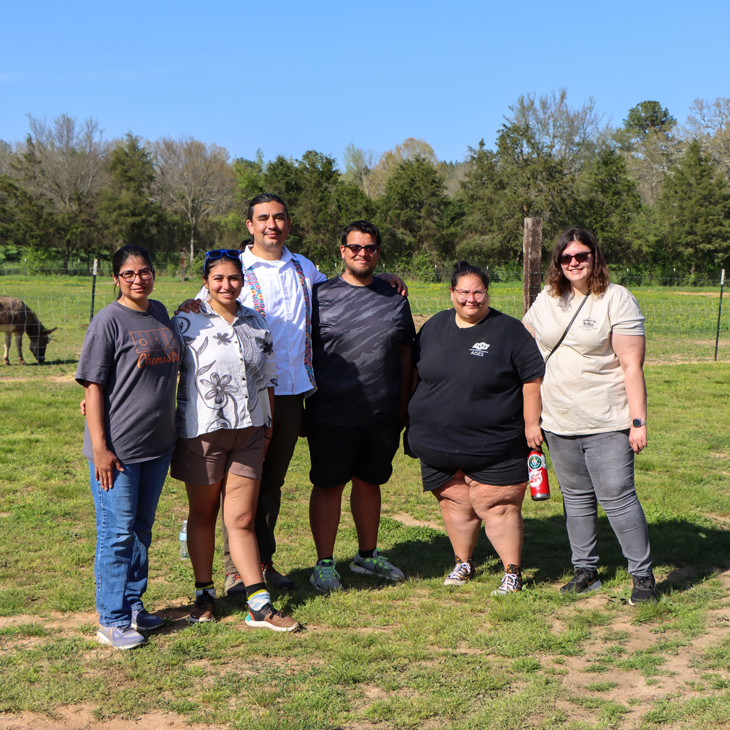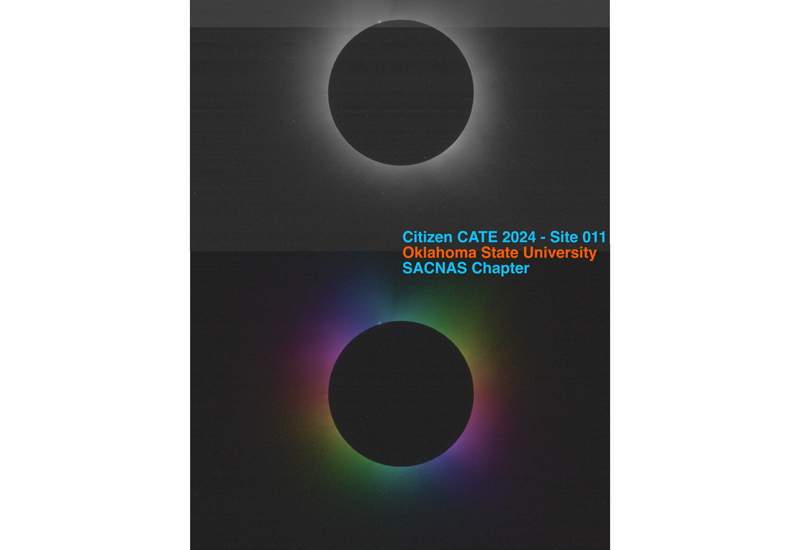
OSU SACNAS chapter measures sun’s atmosphere in nationwide eclipse project
Tuesday, October 8, 2024
Media Contact: Elizabeth Gosney | CAS Marketing and Communications Manager | 405-744-7497 | egosney@okstate.edu
During the April 8 solar eclipse, Oklahoma State University’s chapter of the Society for the Advancement of Chicanos/Hispanics and Native Americans in Science (SACNAS) ventured to Arkansas to measure the sun’s corona.
As part of a Citizen Continental-America Telescope Eclipse project — or Citizen CATE — to capture the sun’s totality across the United States, Dr. Mario Borunda took a group of volunteers to Arkansas for their segment of the data collection.
“I saw participating as an opportunity to empower underrepresented minorities in STEM, one of our chapter’s missions,” said Borunda, an OSU physics professor and associate dean in the College of Arts and Sciences. "None of us are astronomers, but we are interested in astronomy. We did some meaningful research in a new area. As scientists, we need to learn how to have meaningful interactions with the public when discussing science and the CATE project gave us that training.”
Faced with an experiment that required new skills, the team dedicated months to practicing and mastering the use of the telescope. They only had a small window to capture data: the eclipse began at about 12:27 p.m. with totality starting around 1:45 p.m. and lasting approximately 4 minutes, 28 seconds.
“During the eclipse, our task was to capture images of the sun’s corona to determine magnetic connectivity of the middle corona, measure the growing solar wind flow, identify and characterize reconnection in the middle corona,” said Lori Huck, one of the team’s volunteers. “It was honestly the most beautiful thing I have ever experienced.”
The combined measurements provided the Citizen CATE 2024 team with a 60-minute film reflecting the magnetic structure of the sun’s middle corona — data that can only be gathered during an eclipse. The film offers scientists unique insights into the motion of density features within the corona.

“We had to problem-solve since we had to collect data in a real-world scenario with several challenges that would not happen in a prepared learning lab,” Borunda said. “The students participated in a research project, which makes them more competitive for scholarships, internships and job opportunities.”
According to Borunda, the OSU SACNAS chapter is advancing inclusive participation in scientific discovery and fostering the success of Chicanos, Hispanics and Native Americans in STEM.
“We want to grow our chapter and bring in more students to participate in programs like this. SACNAS, for me, has become like a family,” Huck said. “This project was something I never would have participated in had I not been involved in student organizations. I just want to mention how important it is to be involved here at OSU because you gain so much, and you meet so many new people.”
Story By: Adeola Favour, CAS graduate assistant | fadeola@okstate.edu
